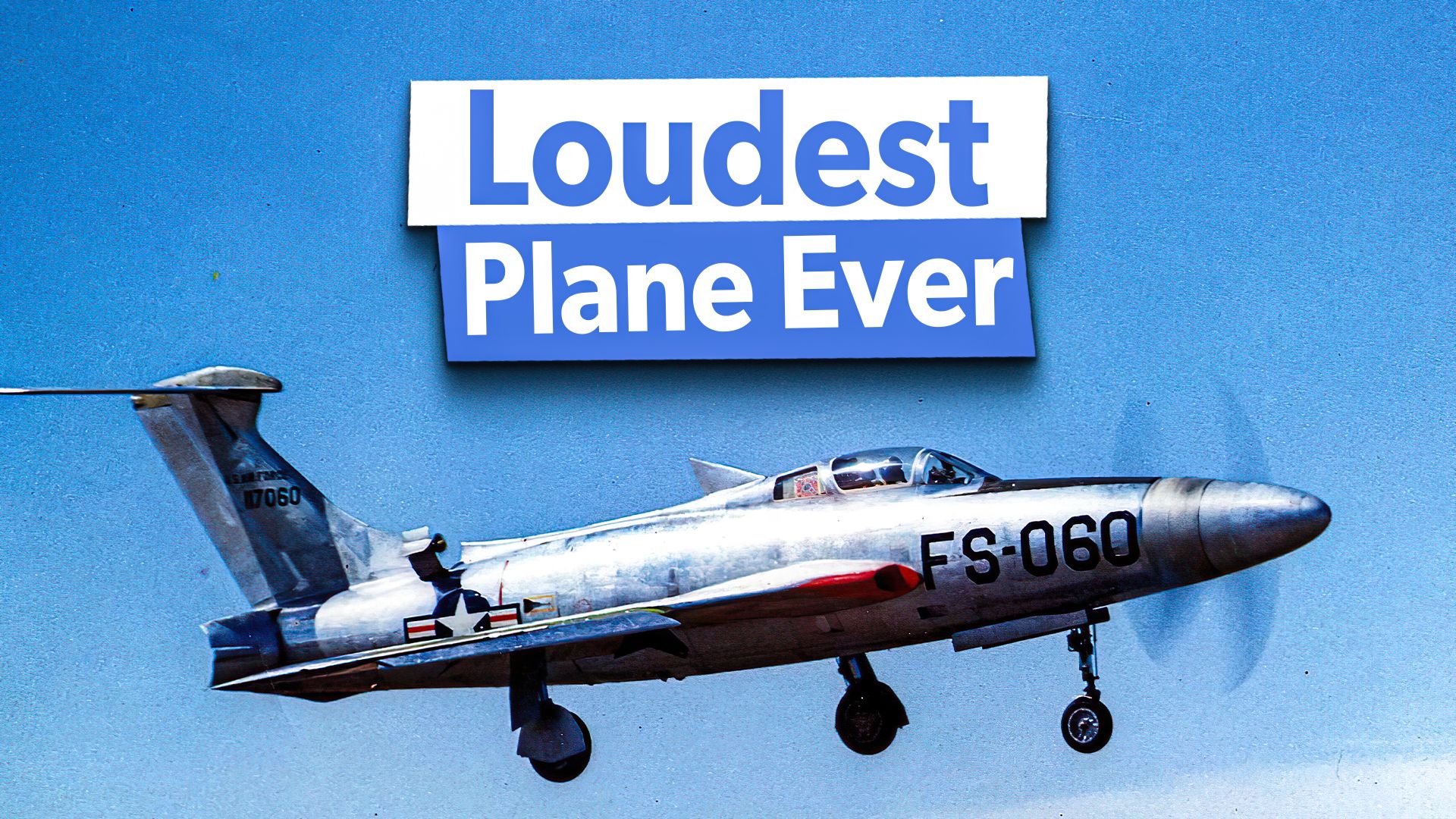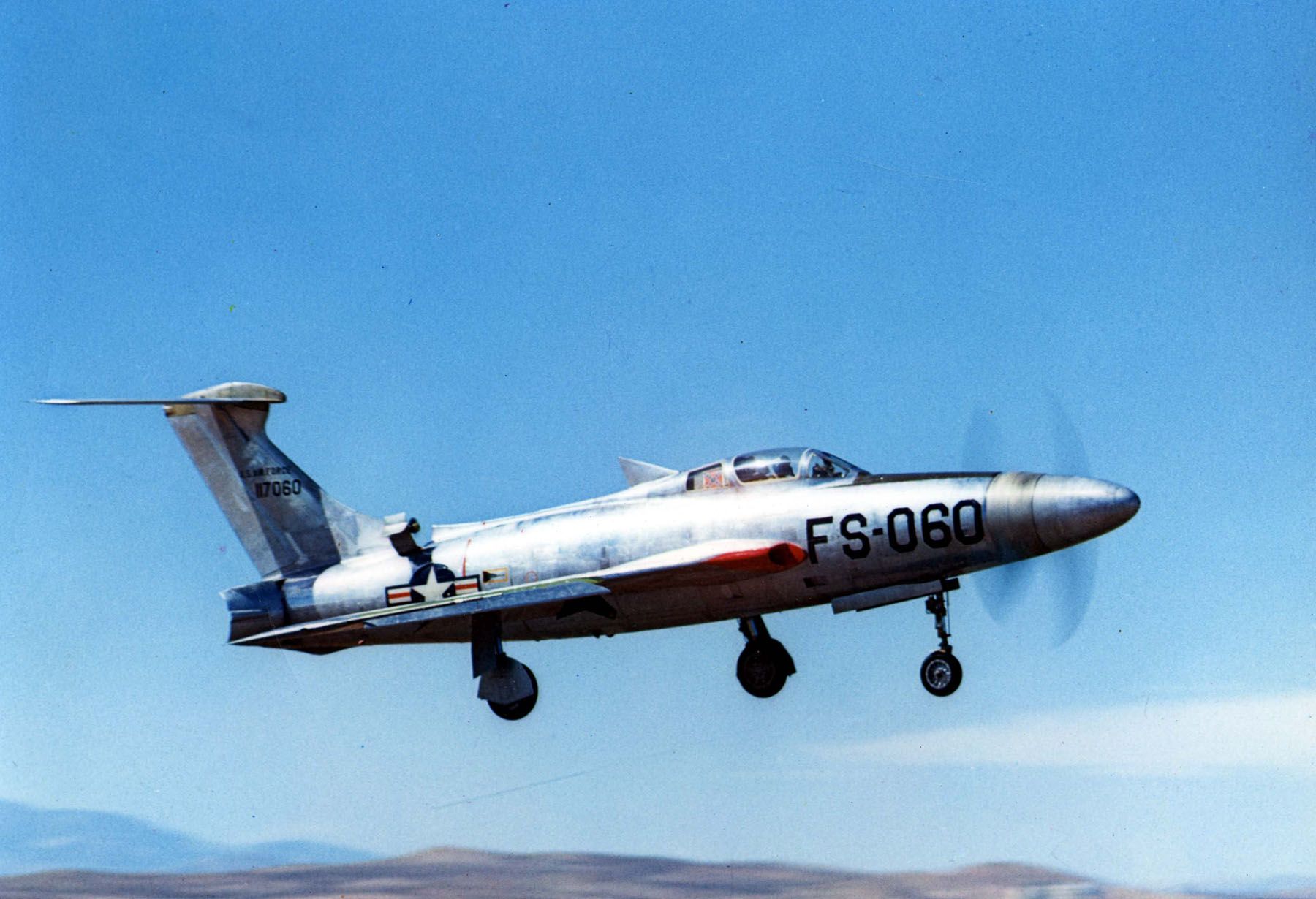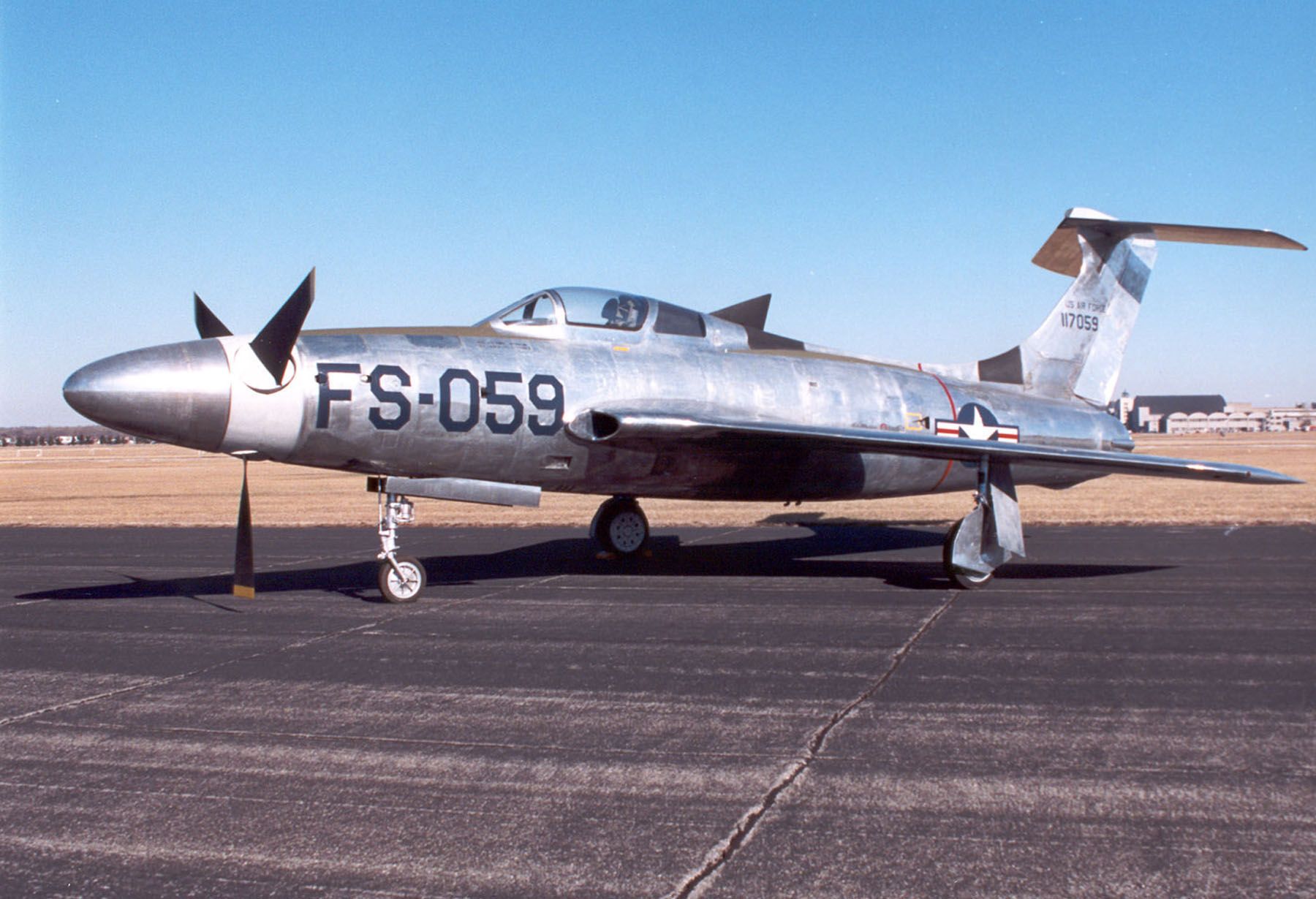Summary
- XF-84H “Thunderscreech” was a loud turboprop by Republic Aviation trying to compete with jets in speed.
- The noise generated was intense enough to cause health hazards to crews and bystanders.
- Mechanical issues and engine failures plagued test flights, leading to the program’s cancellation in 1956.
At first glance, i.e. when I first saw the working title of this article after my Simple Flying editors assigned it to me, I assumed it was about either the Republic F-84 Thunderjet and/or the F-84F Thunderstreak variant, which in turn brought to mind a verse from that classic, morbidly humorous U.S. Air Force fighter pilots’ ditty “Give Me Operations”:
Unplugged version: “Lord don’t give me an F-84./That b!tch is a ground loving wh**e./She’ll pitch and she’ll roll./Then she’ll dig a big hole./Lord don’t give me an F-84”
Slightly cleaned-up version (4:08 mark): “Don’t give me an F-84/Her pilots, they ain’t here no more/They bombed in the crate/But they all pulled out late/Don’t give me an F-84”
But, in the immortal words of the late great Richard “Demo Dick” Marcinko (CDR< USN, Ret.), founding C.O. of SEAL Team 6, “ASSUME makes an ASS of U and ME.” It turns out that today’s subject, though she *did* come from the same manufacturer and bore the same digits at the Thunderjet and Thunderstreak, wasn’t even a jet plane! Instead, we’re talking about a turboprop that, as crazy as it sounds, was actually meant to compete with jet fighters in the Cold War speed game! Say hello to the Republic XF-84H Thunderscreech, which, according to former USAF combat photographer Blake Stilwell in a May 2022 article for Military.Com, was “the loudest aircraft ever constructed.”
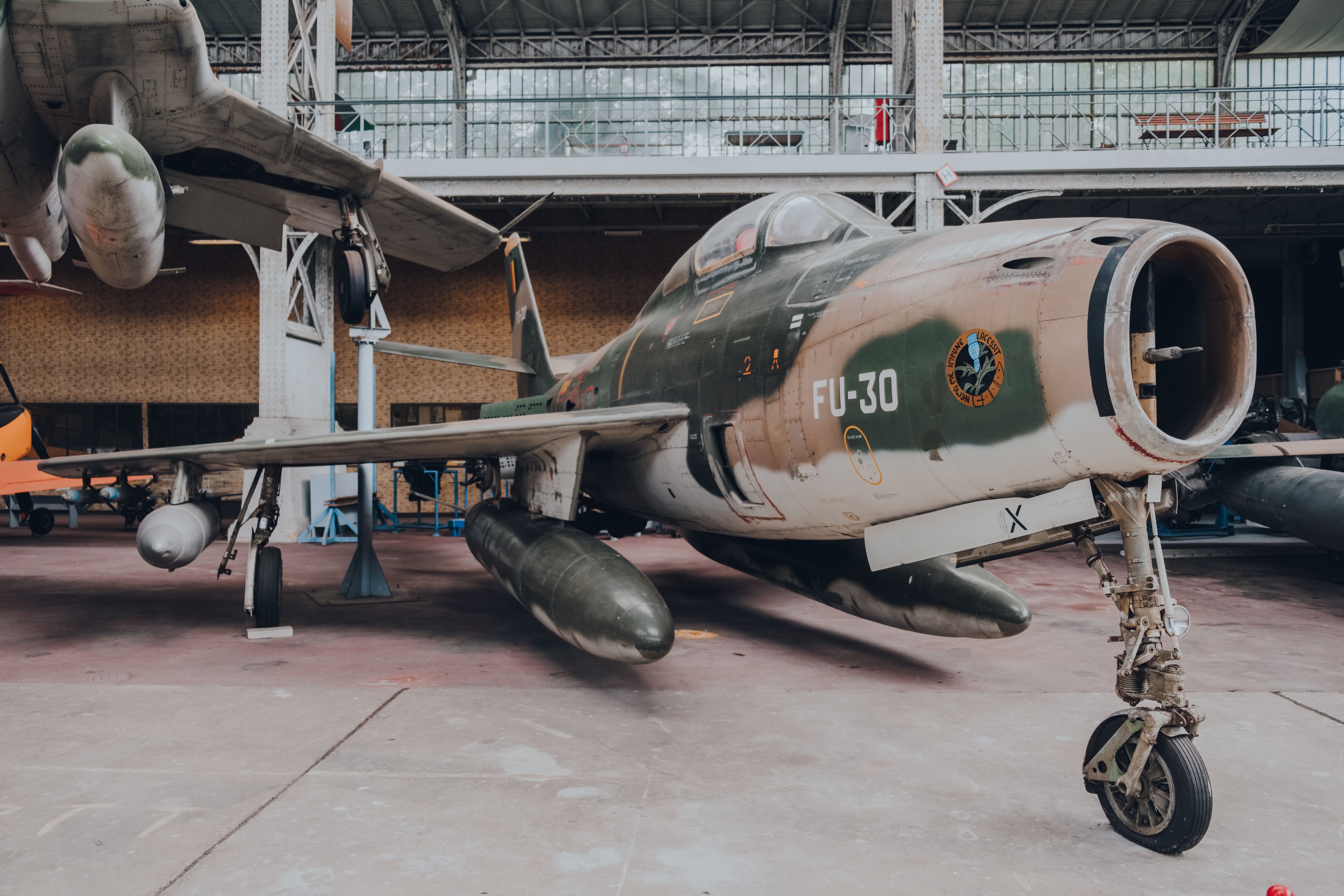
Related
1950s Fighter-Bomber: 5 Fast Facts About The Republic F-84F Thunderstreak
The type set a record and was used by the Thunderbirds.
XF-84H early history and specifications
Some of our dear readers are undoubtedly saying to themselves, “WTF seriously were they thinking?!?! A turboprop trying to match speed with a jet?!?!” The aforementioned Mr. Stilwell adroitly answers that question:
“One might be thinking about why the Air Force would be interested in building a prop plane in the age of jet aircraft. They had hoped to create an aircraft that could fly as fast as a jet while giving the pilot a responsive plane that propellers provided…The airplane would never fly supersonic, but that doesn’t mean it was slow. It was able to handle like a prop plane and give the pilot the acceleration the Navy needed to get planes off a carrier without a catapult. That’s where the list of ‘pros’ ends for this particular plane.”
As for the “cons,” we’ll address that in a bit, but meanwhile, some obligatory early history and vital stats.
The XF-84H made her maiden flight on July 22, 1955, which was a solid 7 years and 9 months after the late great Chuck Yeager broke the sound barrier in the jet-powered Bell X-1. As already noted, she was built by Republic Aviation, which was best known for two other “Thunder”-themed warbirds: (1) the legendary P-47 Thunderbolt of WWII and (2) the equally legendary present day A-10 Thunderbolt II AKA “Warthog” (technically under the auspices of Republic Aviaiton’s successor, Fairchild Republic).
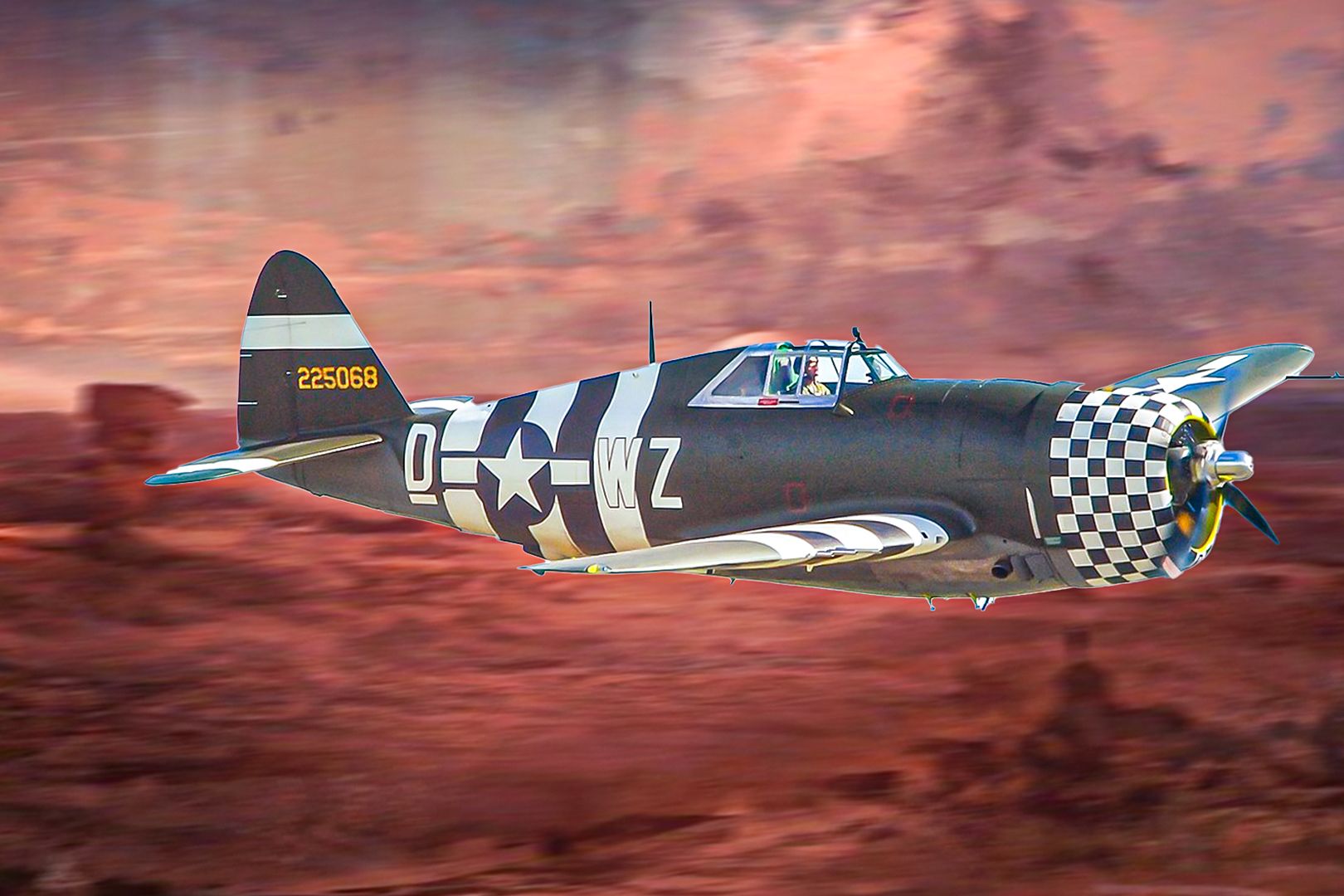
Related
The Republic P-47 Thunderbolt: Flown By America’s Top 2 Aces in Europe During WWII
The P-47 gets less love than P-51 amongst WWII fighters. Yet it was the “T-Bolt” that was flown by the top two U.S. aces of the European Theatre.
Upon further review, it turns out the plane was indeed created by modifying a F-84F Thunderstreak airframe, which reassures me that the my initial assumptions mentioned in the opening paragraph of this article weren’t totally off the mark after all!
The Thunderscreech had the following specifications:
|
Crew |
One |
|
Fuselage Length |
51 ft 5 in (15.67 m) |
|
Wingspan |
33 ft 5 in (10.18 m) |
|
Height |
15 ft 4 in (4.67 m) |
|
Empty Weight |
17,892 lb (8,132 kg) |
|
Gross Weight |
27,046 lb (12,293 kg) |
|
Max Airspeed |
520 mph (837 km/h, 450 kn; Mach 0.6777) |
|
Range |
2,000 mi (3,200 km, 1,700 nmi) |
|
Service Ceiling |
40,000 ft (14,600 m) |
|
Powerplant |
One Allison XT40-A-1 turboprop, 5,850 hp (4,365 kW) |
Only two airframes were actually built.
Mind you, that quoted max airspeed, though still subsonic, is not to be confused with the speed of the propeller tips, which did indeed exceed the speed of sound, spinning at Mach 1.18 (905.3 mph; 1,457 km/h; 786.7 kn)! The resultant noise generated by the props were the inspiration for the plane’s “Thunderscreech” nickname, which makes for a convenient segue to our next segement…
Just how loud was she, i.e. What’s in a name?
Merriam-Webster defines “screech” as “a high shrill piercing cry usually expressing pain or terror.” To fans of the 1990s sitcom “Saved By the Bell,” the name conjures up memories of the late Dustin Diamond as 1977 – 2021) as the lovably nerdy Samuel “Screech” Powers. To fans of the Washington Nationals MLB team like me, Screech is our team’s beloved mascot.
Suffice to say that both of those Screeches had a more successful career than this (Thunder) Screech:
So, about that loudness factor? Painful indeed, the Thunderscreech’s engine noise was not only capable of generating sonic booms that could be heard some 25 miles away, it was a genuine health hazard to the plane’s crews and anyone else unfortunate enough to be nearby. Quoth Mr. Stilwell again:
“The noise combined with the shock waves of the booms were enough to effectively cripple the area and any crewmen who might be in it. Crews would have to endure while the XF-84 was powering up for 30 minutes before takeoff…One unlucky C-47 Skytrain crew chief who happened to be in the area while a Thunderscreech was powering suffered a seizure in the back of his aircraft due to the intensity coming out of the XF-84.”
Meanwhile, Logan Nye of Coffee or Die Magazine (catchy title, eh?) adds that the engine noise was rumored to have caused miscarriages, and Stephan Wilkinson of Smithsonian Magazine says that it “brought grown men to their knees.” Mr. Wilkinson opens that article with this bitingly sarcastic comment:
“IT WAS THE ERA OF SOUNDED-LIKE-A-GOOD-IDEA-AT-THE-TIME DESIGNS.”
(Or as a lot of us current and former military types call it, “The Good Idea Fairy.”
Perhaps that godawful tortuous noise would’ve been at least partially mitigated and justifiable if the aircraft herself had proved successful. Alas, this was not to be the case (which explains why only two were ultimately built). Those supersonic propeller vibrations caused mechanical issues that in turn triggered engine failures in 10 out of the 11 test flights!
What’s more, it took 30 minutes to prep the Thunderscreech for flight, which is simply an unacceptable amount of lag time for a fighter plane that may need to be scrambled in a hurry to intercept enemy warplanes.
Mercifully, the USAF canceled the program in September 1956. The Thunderscreech, for all of her ignominous failure, *did* succeed in one regard (besides being the loudest aircraft ever, that is): she was able to claim the status of the fastest single-engine propeller-driven aircraft until 1989 when “Rare Bear”, a highly modified Grumman F8F Bearcat, reached 528 mph (850 km/h; Mach 0.71).
Where are they now?
One of the two XF-84Hs, Registration No. 51-17060 (FS-060), was presumably scrapped after making a mere four flights, although she at least left behind some positive legacy as an “organ donor” (so to speak). , as T40 engine was reportedly used to support the Douglas A2D Skyshark flight test program
As for the other one, Reg. No. 51-17059 (FS-059), though she wasn’t a winner, at least she can lay claim to being a survivor. She is now on display at the National Museum of the United States Air Force at Wright-Patterson AFB, Ohio. The museum obtained the warbird from the City of Bakersfield in Kern County, California in 1999.

